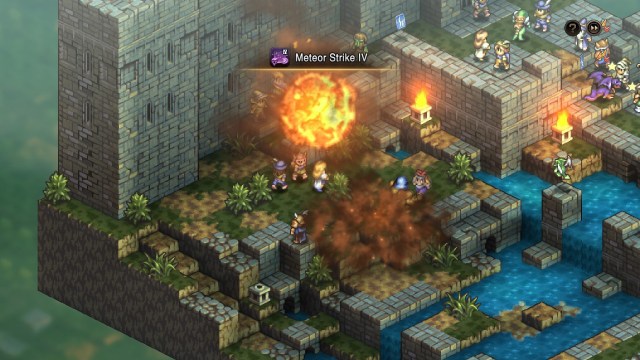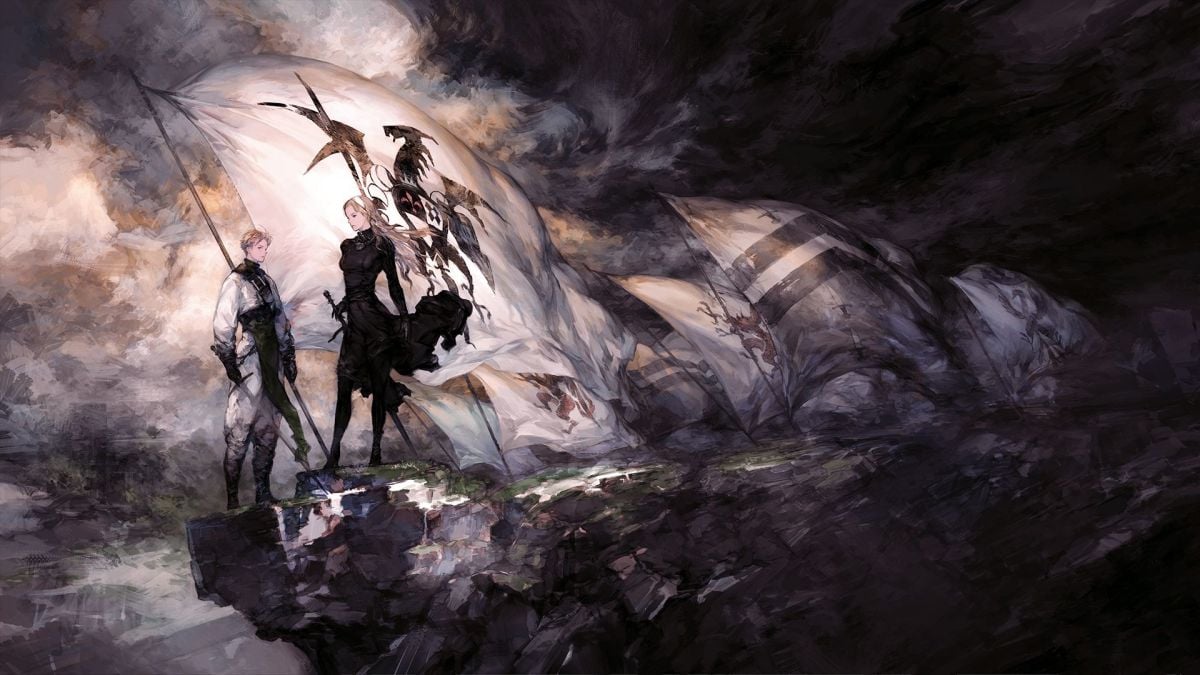Old-school depth for a modern audience
The tactics genre is an old one, and few stand out like Tactics Ogre. The original Let Us Cling Together has hit a number of devices, from the SNES to the PlayStaiton, on to the PSP and finally, with Tactics Ogre: Reborn, our current crop of modern consoles and PC.
Reborn is a remaster of a remake, bringing forward the PSP strategy classic to somewhere it’s more readily playable and fine-tuning it in the process. There are tons of videos and resources out there to grapple with all the changes, massive and miniscule, that Square Enix has made to this classic.
For context, I’m a newcomer. I’d call myself an avid tactics fan, but my entry point was much later on; handheld games like Final Fantasy Tactics Advance, Fire Emblem, and Shin Megami Tensei: Devil Survivor were my introduction to the pain and glory of turn-and-tile-based combat.
It’s important to stress this because that’s where I’m coming from here. I’m a newcomer to the classics like Tactics Ogre. and Reborn is a chance for me to see what I’ve missed. To not just experience a seemingly foundational work, but examine it after playing years and years of the games that both emulated and elaborated on its designs.
Tactics Ogre: Reborn follows Denam, a fighter for the Walister alongside his sister Catiua and friend Vyce. Their home was razed in the fallout of the war, and the trio are seeking vengeance, starting with a knight named Lanselot.
The trio become increasingly entwined in an ongoing civil war. Wallister, Galgastan, and Bakram form the three forces vying for control of the island of Almorica and, gradually, all of Valeria. Tactics Ogre: Reborn has the player wade through a lot of exposition and proper names at first, and all layered in an extremely Shakespearean dialogue.

It honestly takes some to get familiar with the cavalcade of faces and names in Tactics Ogre: Reborn, and even writing this now, I had to pull up references and double-check it all. The story might, at first, seem a little too dense.
But peel away the proper terminology, and Tactics Ogre is really about the effects of the ongoing civil war on the people of Valeria. A childhood home getting razed is just the beginning. The war expands out to encompass every character’s life, and their allegiances will shift over time. Maybe they find solace in comradery and a shared cause. Or maybe they die, fighting for a belief that never held true. This is war, and people will die. Tactics Ogre: Reborn doesn’t really shy away from grappling with that, giving you an ethical quandary right away in its first chapter.
These decisions Denam, and the player, make start to branch out, forming a flowchart of the world. Post-Chapter 1, Tactics Ogre: Reborn can split off into several different routes, and go even further from there. Aside from this being a ton of content to play, it’s also a lot of different potential ways the story can go depending on decisions you make. Some are obvious, some are esoteric, and without a guide you’ll probably miss at least a few character recruits. Thankfully, once a playthrough is finished, the player can go back and replay from pivotal moments using the World menu. It’s a nice touch that adds a ton to do, on top of Reborn’s plethora of side content.

And then there is the combat. Aside from story and nostalgia, the turn-based tactical battles of Tactics Ogre: Reborn are likely why people would be interested. This is one of the grandfathers of strategy RPGs, after all.
I will fully admit, Tactics Ogre: Reborn can frustrate me sometimes. It is surprisingly open-ended. It allows for tons of customization and tuning. Characters can freely swap classes, so long as you’ve got enough marks. Giant rows of numbers and square-shaped abilities dot the menu interface for each unit.
Canopus, a story character you get pretty early on, is talented with both an axe and a bow. I opted to take him into a more direct archer path, as he became a mobile artillery that could pick healers and mages out of the back line. Denam, meanwhile, stayed as a basic warrior until I could make him a Ninja. In one fight, he barely eked out a win against a souped-up boss by himself, just by applying Falsestrike (chance to miss attacks) and pelting him with magic.

It is, simply put, daunting. It also doesn’t help that a good deal of this game’s nuances and info is buried in menus and access you’d need to either dig for, or ask a more seasoned veteran about. Learning that magic can critically strike, archers can outrange their displayed attack squares if they have a height advantage, and that just holding a dagger allows units to deflect attacks, even if they never use it, are all big tips you’d have to discover or be told about.
For a while, it was a bit discouraging. But the longer I spent with Tactics Ogre: Reborn, the more I came to enjoy the massive system laid out before me. It was filled with intricacies, yes, but ones I could exploit. It might seem complex at first, but only because I needed to approach it with intent. Once I could start to conceive what sort of plan I wanted, I could shave down the options and form the units I wanted from the game’s marble.
Those options are critical, because battles are not kind to the player in Tactics Ogre: Reborn. I lost count of the times I opened up a map and scouted the coming fight, an apparently new feature, and laughed at how disadvantageous my position was. Cornered in a pit, beset on all sides, sieging a castle uphill as enemies pelt you with arrows and spells behind ramparts; Reborn throws it all at you.
It’s not a complaint, though. I adore the map design of Tactics Ogre. Each level feels tailored to a specific problem. Every encounter, at least on the main route, has interesting problems to solve. Yes, the enemy has a strong position, but it’s also condensed. They can fire on me all they want, but it’s difficult for them to push out without exposing their more fragile units.

Strategies and tactics start to form, and right there is the magic of Tactics Ogre that has lasted through the years to Reborn. In most tactics games, there is a careful pace to start. Each side inches closer and closer, decreasing the distance between the armies until an all-out brawl begins. Tactics Ogre makes those careful moments feel like tense standoffs. And its maps force you to adapt, or watch units fall one-by-one.
All this customization and a wealth of both unit and class options feed back into the machine. Now you’re fine-tuning an army to tackle a specific encounter. You know they’re bringing dragons, so you pick up some dragoons. Magic is going to rain down, so you better give everyone some healing salves to carry and maybe a Spellspoil item or two. A narrow chokepoint dominates the map? Time for a knight to lead the charge, using its Rampart Aura to block enemies from moving past him.
Battles are prolonged, arduous affairs at times. Individual conflicts could eat up half-an-hour, easily, even when I sped up the turn speed. Units would chip back and forth. MP would slowly build up, so potent abilities could be unleashed. Blue buff cards dot the field, giving me potential advantages if I broke formation to acquire them. Aforementioned boss characters can run rampant, dropping your units in a single swipe if left unchecked.
The Chariot Tarot, a turn-back-time option that allows for branching timelines of options, is an excellent helper in those moments. But victories felt hard won in Tactics Ogre: Reborn. Often, it took me thinking carefully, planning well, and playing pristine to get through a battle without significant problems. It can feel heavy, but makes every victory feel so much sweeter for it.

At this point, I should make mention of the graphics. The pixel-smoothing Square Enix opted for has repeatedly caused a stir, and I get it. I really do. I sometimes wish there was an original graphics mode, like what the Command & Conquer collection had, so I could swap back and forth. But I also think the look is less offensive than some make it out to be. Could it be better? Absolutely. But after my first hour with Reborn, I had adjusted and was fine with it, and even appreciated how it looked on certain maps, especially when I zoomed out for a big view of the whole arena.
Tactics Ogre: Reborn is challenging but malleable. It’s dense in lore, but extremely down-to-earth in the problems it tackles. And good lord, it is stuffed with things to do. It’s a smorgasbord of tiles, turns, and tactical choices.
I’m not even finished with it yet, as I’m still mired somewhere around the game’s closing chapter. There are sidequests to uncover, units to train, new fighters to recruit, and dungeons to explore. Every moment I think I’ve got a grasp on the breadth of Tactics Ogre: Reborn, I’m uncovering a new ability, or learning of a long-kept secret. It’s not just a game I’m picking up for seasonal coverage and moving on from, but one I’ll be chipping away months from now, and I love that.
So do I recommend this to a newer, younger, more-modern tactics fan? If your intent is education and learning the roots of the genre, absolutely. And if you want a Ulysses-esque epic to chew on, day over day for months on end with plenty to do, this might be one of the best options around.If you’re just looking for a new tactics experience, you might need to ask yourself what you’re looking for. Tactics Ogre: Reborn is not a walk in the park. But if you like a heavy heaping of customization, dense and thoughtful dialogue, and a good challenge, Tactics Ogre: Reborn is well worth revisiting.
These impressions were based on a retail build of the game provided by the publisher.





Published: Nov 22, 2022 04:00 pm